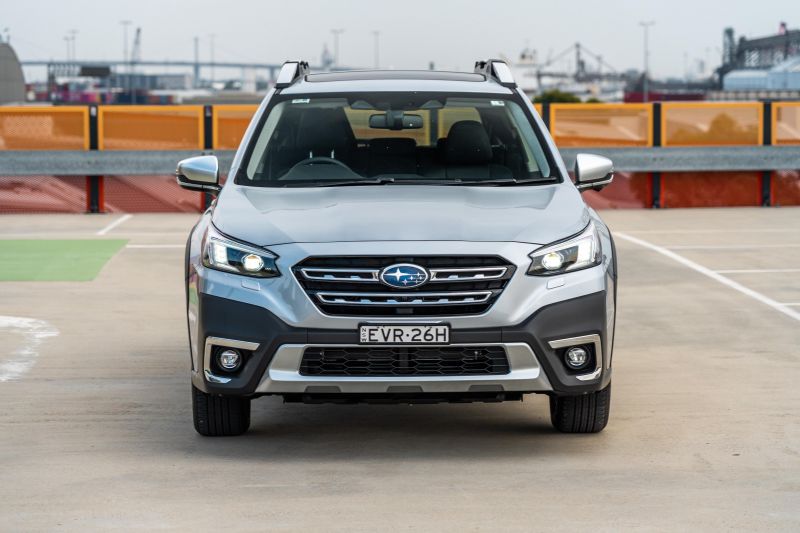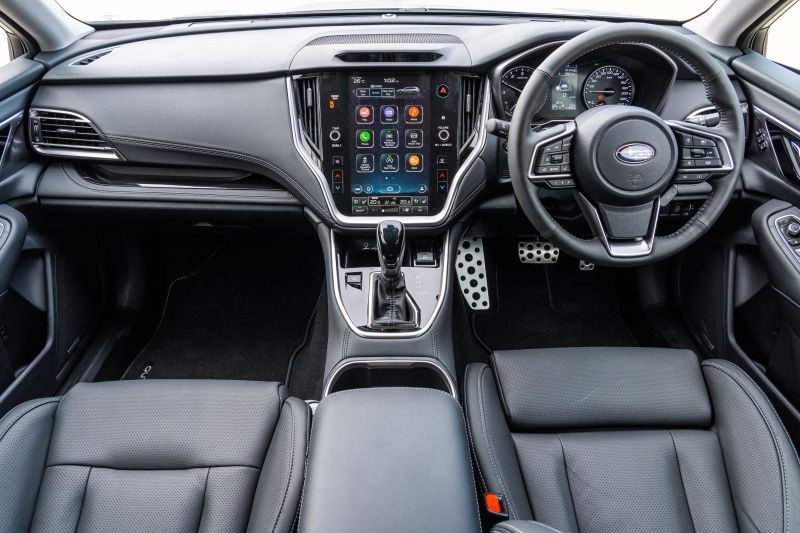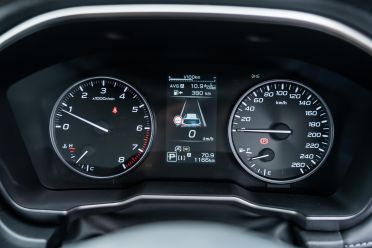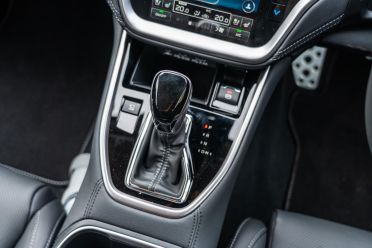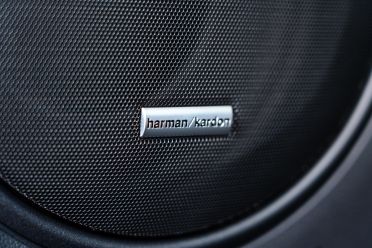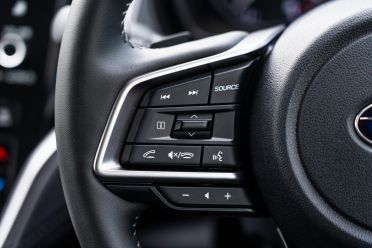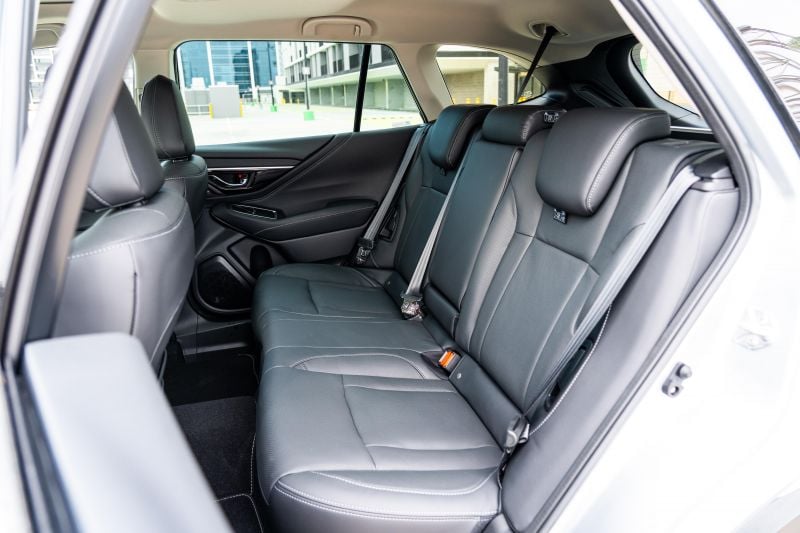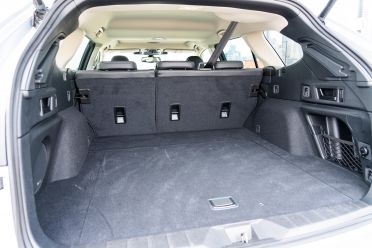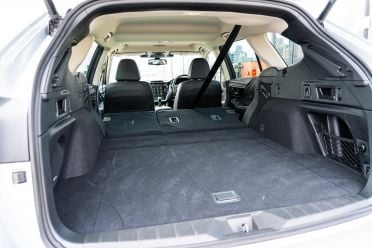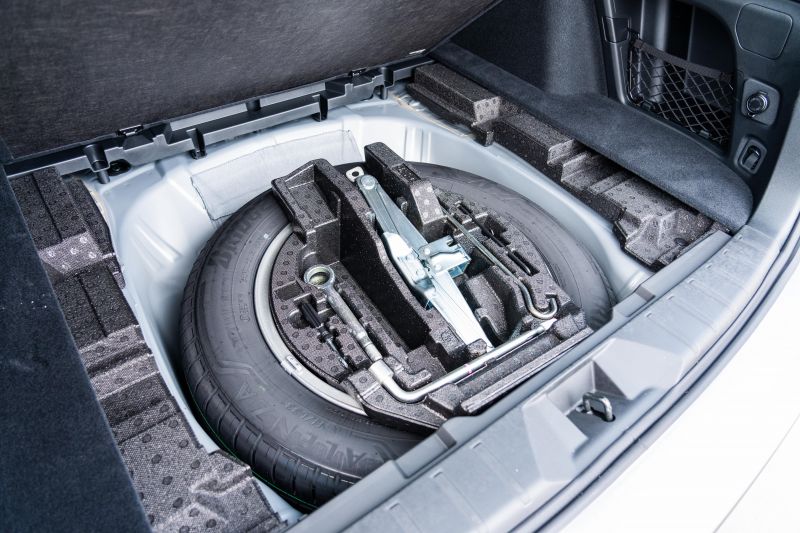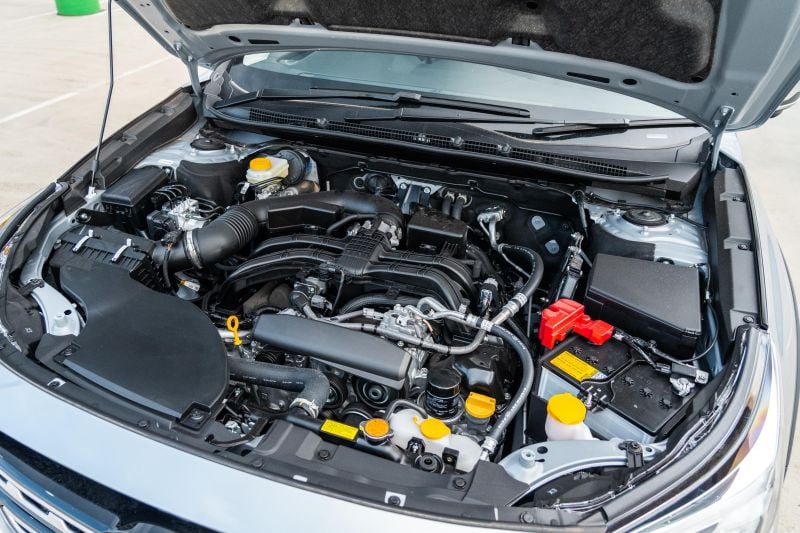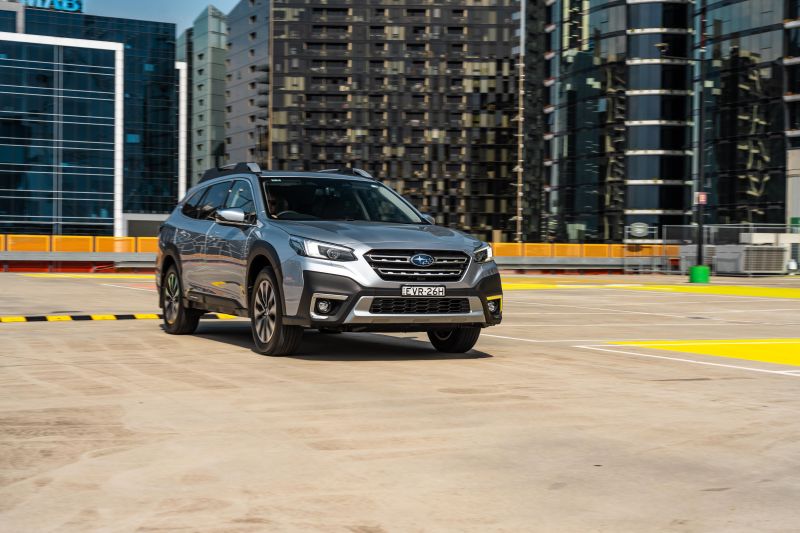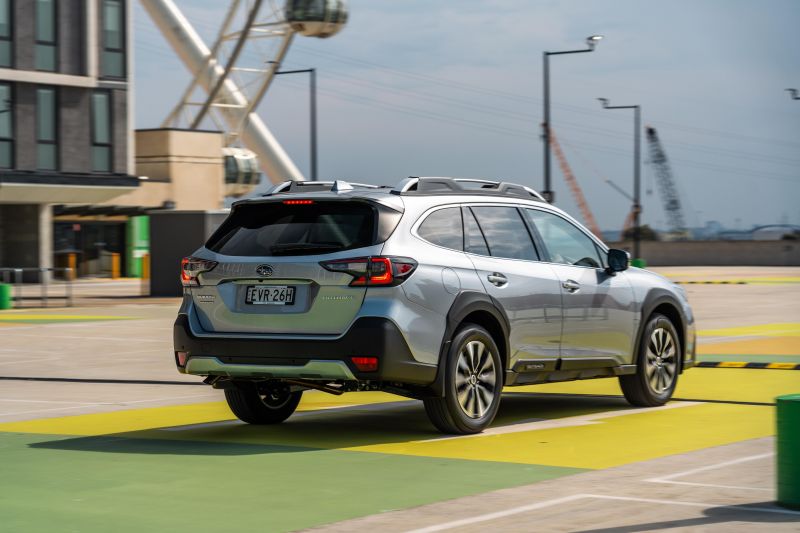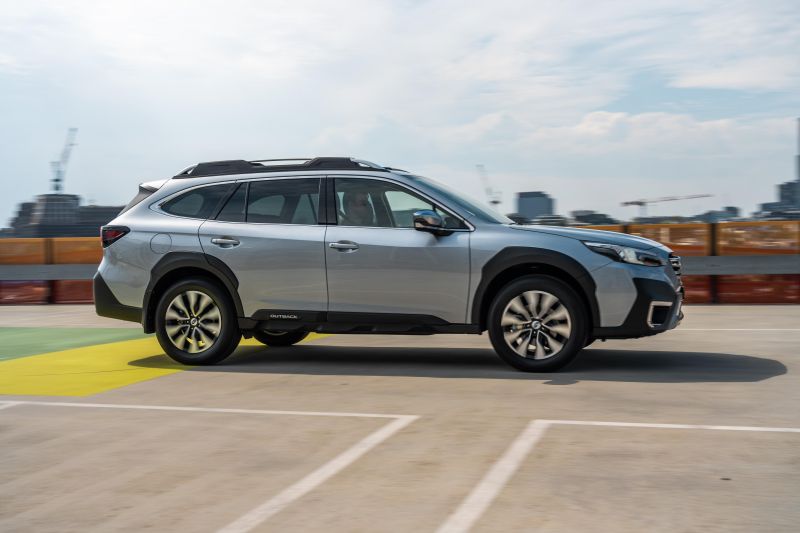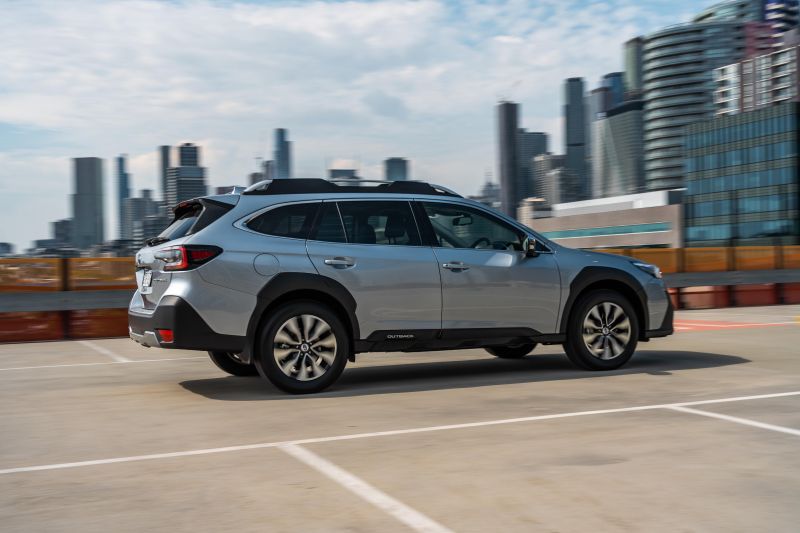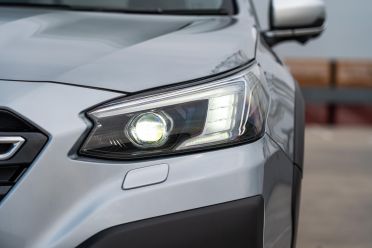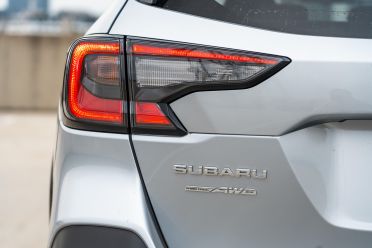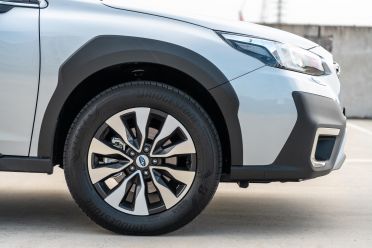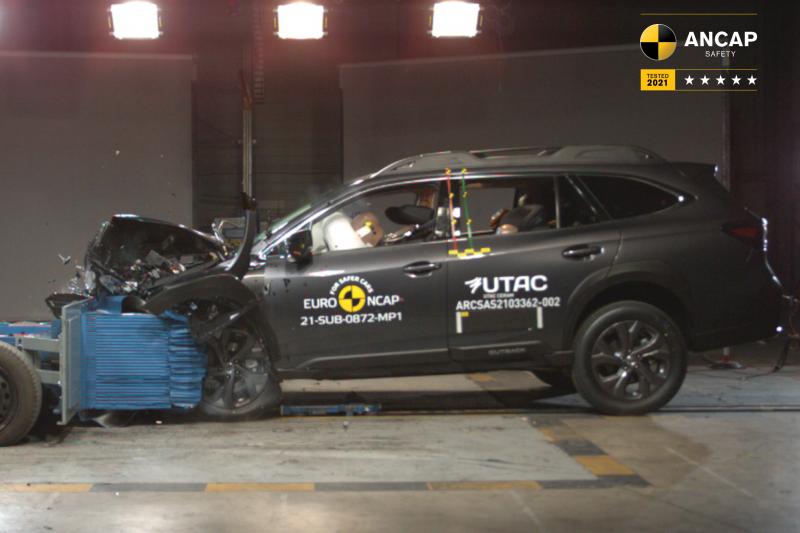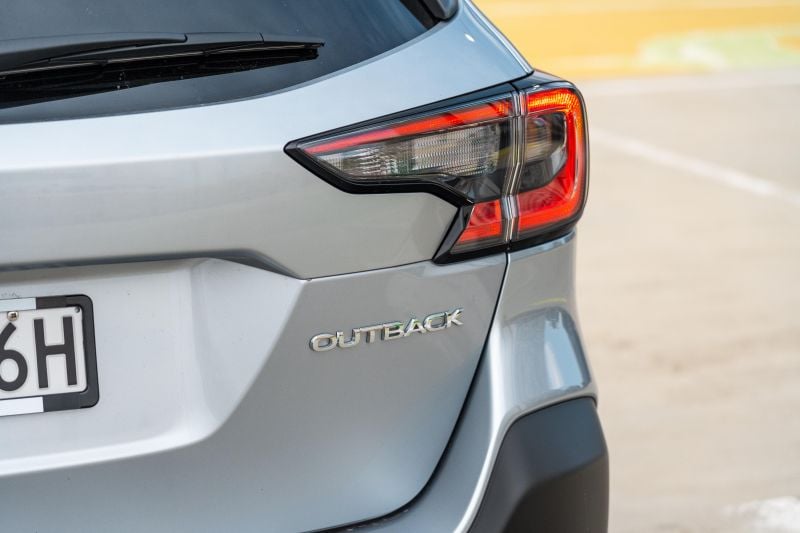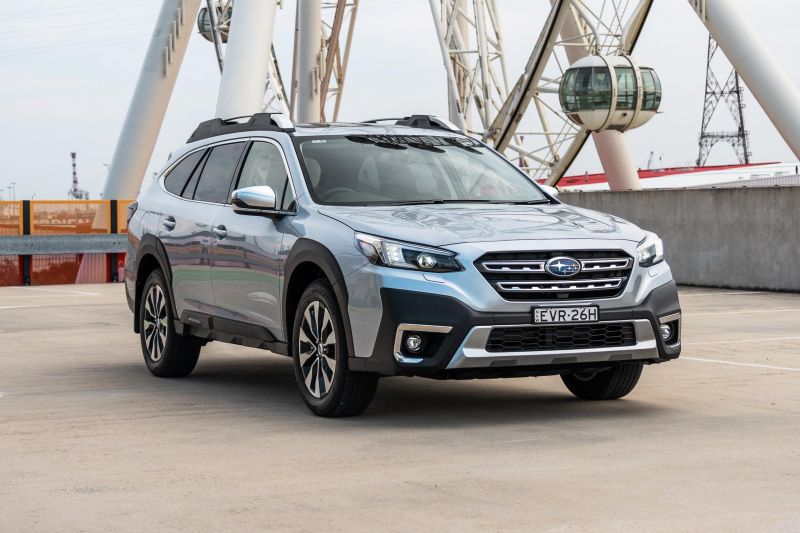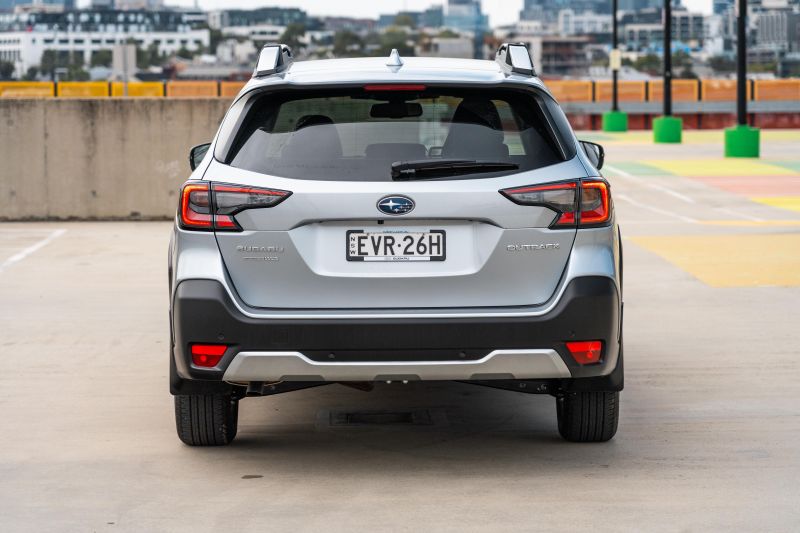Subaru has evolved the Outback again.
The latest model is bigger and higher-tech than those before it, but the combination of a raised ride, wagon body, boxer engine, and all-wheel drive has carried the Outback through six generations and close to 30 years.
If you ask Subaru, it’s an SUV. If you ask us, it’s a wagon that’s been rebranded to remain relevant in the face of strong competition from crossovers.
Now two years old, the current Outback has come in for some detail updates.
Subaru has simplified the button-heavy steering wheel, added USB-C charging, and improved the infotainment system with wireless Apple CarPlay and smarter voice controls. It’s a subtle evolution, but one that shows someone at Subaru head office has been listening to feedback from customers and the media.
Clearly, there wasn’t much wrong with the Outback to start with. The latest update has made it better again.

How much does the Subaru Outback cost?
Subaru says the Outback is a large SUV, but in reality it’s a wagon with a taller ride.
That means it goes head-to-head with cars ranging from mid- and top-end versions of mid-sized SUVs, to larger and more expensive cars like the Kia Sorento.
The Touring is aligned with a Toyota RAV4 XSE AWD hybrid ($50,200 before on-roads), Mazda CX-5 G25 Akera AWD ($51,500 before on-roads), and Hyundai Tucson Highlander 1.6T ($50,900 before on-roads) on price.
- 2023 Subaru Outback AWD: $42,690
- 2023 Subaru Outback AWD Sport: $47,190
- 2023 Subaru Outback AWD Touring: $50,990
- 2023 Subaru Outback AWD Sport XT: $52,190
- 2023 Subaru Outback AWD Touring XT: $55,990
All prices exclude on-road costs.
What is the Subaru Outback like on the inside?
This feels like a car designed to drive long distances with big people behind the wheel. It’s damn comfortable.
The basics are all excellent. The front seats are cushy armchairs with plenty of adjustment, and the steering wheel is a chunky leather-wrapped unit that feels meaty in your hands. Vision is excellent in every direction, making this an easy car to place in the city despite its size.
Subaru dialled back the buttons with the reveal of the latest Outback, with the vertically-oriented touchscreen eating up the climate controls and trip computer the brand has traditionally situated atop the dashboard.
With sharp graphics and smooth responses, it looks and feels properly modern. There are prominent shortcuts for commonly-used functions like fan speed, and the physical controls for the volume and temperature are a welcome touch.
Even better are some of the changes Subaru has made as part of its recent update. Wireless Apple CarPlay now features as standard, and one of the USB-A ports has been subbed for a faster, more modern USB-C charging port.
Unfortunately, Subaru still forces you to dive through menus to active the automatic brake hold and to deactivate the driver monitoring system… every single time you start the car. You’re able to create big shortcuts for each function on the home menu, but that’s not as useful as having them just stay on or off.
There’s a slot beneath the dashboard that’s well shaped for a modern iPhone or Android phone, albeit without the wireless charge pad that now features on most rivals.
You get deep cupholders – too deep for a small latte – and a spacious two-tiered bin beneath the padded central armrest. There’s even a little slot ahead of the passenger, so road trip snackers won’t struggle to find places to stash their chocolate.
If there’s a complaint, it’s that Subaru is throwing too much information at you. Between the touchscreen, the trip computer atop the touchscreen, and the compact screen between the dials, there’s a lot of numbers on show at any one time, all of them in the same slightly hard-to-read font. The ability to pare it all back would be welcome.
At least Subaru has tidied up its wheel, which before its most recent update had way too many buttons, toggles, and paddles. The new unit still has plenty going on, but is far more user friendly in its layout.
Rear seat space is impressive, proving once again you don’t need an SUV to lug your family around in comfort.
Legroom and headroom are excellent, and the bench itself is supportive and well-padded. With tall windows and a classic wagon window line (alright, almost classic) there’s plenty of light back there, and the fold-down armrest, USB-A chargers, heated outboard seats, and air vents will keep children happy.
Access through the rear doors isn’t quite as easy as in the Forester, which has a broader opening and doors that swing to 90 degrees, but you won’t struggle to load child seats – or the children who sit in them.
There are ISOFIX points on the outboard rear seats, and three top-tether points. The rear bench folds 60/40, and can be lowered using handles in the boot or on the rear seats themselves.
Although folding them frees up a massive, flat load space, it’s annoying Subaru still mounts the middle seatbelt in the roof, and the lack of a ski port or central passthrough is an oversight on a car designed with practicality in mind. The boot itself is massive (522L/1267L), with handy touches like netted pockets and fold-down grocery hooks.
Subaru also has fitted a luggage blind that can be slid higher without actually needing to remove it entirely, which makes it easier to get items out from beneath it.
There’s a full-sized spare wheel beneath the floor.
What’s under the bonnet?
Non-XT versions of the Subaru Outback are powered by a naturally-aspirated 2.5-litre four-cylinder boxer engine producing 138kW of power and 245Nm of torque, mated to a continuously-variable transmission and all-wheel drive.
A more powerful 2.4-litre turbocharged four-cylinder engine making 183kW and 350Nm is available for 2023.
Claimed fuel economy is 7.3 litres per 100km; we saw in the mid-8.0 range with a skew to highway driving.
City traffic quickly saw that figure blow into the nines or higher, even with automatic start/stop operational.
The car drinks 91 RON regular unleaded, and has a 63L fuel tank.
How does the Subaru Outback drive?
It’s made some changes to the interior, but Subaru hasn’t changed how the Outback drives.
Prod the start button and the Outback settles into a high idle, backed by a muted boxer burble. It’s more polished than its predecessors, but it’s still instantly recognisable.
The ride is pretty good, although it can feel a bit springy over highway crests and dips. Subaru has fitted sensible 18-inch alloy wheels wrapped in 60-profile tyres, and it’s not tried to make the Outback feel like a sports car, so the fact it rides nicely should come as no surprise.
It has plenty of suspension travel for a plush feel over highway dips and inner-city speed bumps, but the body is also well enough controlled that the car never feels like a floaty barge.
With direct steering and a solid, planted stance, you’re able to tip it confidently – if not necessarily quickly – into corners, even on greasy road surfaces. There’s a reason Subarus still sell strongly among people who take their cars to the snow, or to remote surf spots.
The weak link in the chain is the engine, which is adequate but nothing more. It’s happiest at city speeds, where the CVT can shuffle between the quiet, smooth low-end of the rev range and the torque peak at 3400rpm without feeling or sounding strained.
It’s one of the better CVTs on the market, and manages to fade into the background for the most part. It’ll occasionally pretend to be a torque converter, mimicking upshifts on medium throttle inputs and slurring through shifts if you take charge with the paddles behind the steering wheel.
Really put your foot down and the engine struggles. It’s light on torque for such a heavy car, which means you really need to work it hard to get going in a hurry. Put your foot down to pick a gap on the highway and you get more noise from the engine and a slightly elastic feeling from the transmission, but very little in the way of performance.
It’s acceptable with two passengers on board, but with a carload of people and luggage the Outback is working hard. The CVT needs to spike the revs up hills at 100km/h, and the way it needs to almost spool up when you put your foot down in the default Intelligent drive mode isn’t all that pleasing.
You can take charge with the paddles to keep the engine in its torque band – and to give you proper engine braking – but it’s something you’ll need to do grudgingly, rather than willingly. Having driven the new 2.4T, it’s absolutely worth the extra $5000.
Once you’ve hit the legal limit though, the big Subaru settles down to a refined cruise. The engine hums silently away in the background, although there’s still a bit of tyre roar in the cabin on Australian back roads. It’s more refined than the older Forester, so clearly some work has gone into suppressing unwanted noise and vibrations in the cabin.
The EyeSight driver assist suite has become a major Subaru selling point, and it holds up well here – save for the fact the adaptive cruise control is prone to creeping on rolling hills.
Then there’s the driver monitoring system. It’s a good idea in theory, chiming when the driver takes their eyes off the road to discourage distractions on the move, but it’s also prone to false positives. Leaning to one side of the seat? No you’re not, you’re distracted.
Turning the system off involves taking your eyes off the road to flick through touchscreen menus every time you start the car. How ironic.
A quick Google reveals plenty of owners have tried and failed to permanently disabled the system.
What do you get?
The base Outback AWD gets:
- 11.6-inch vertical touchscreen infotainment system
- Wireless Apple CarPlay and Android Auto (new)
- 4.2-inch trip computer
- DAB+ digital radio
- Cloth upholstery
- Body-coloured mirrors
- Roof rails with integrated cross bars
- Grey 18-inch alloy wheels
- Dual-zone climate control
- Paddle shifters
- Six-speaker sound system
- Four cargo hooks in the boot
- Automatic windscreen wipers
- Auto-dimming rear-view mirror
Opting for the Outback AWD Sport and Outback AWD Sport XT will add over the base model:
- Water repellent sports seat trim
- Heated front seats
- Heated rear outboard seats
- Front- and side-view cameras
- Black exterior highlights
- Hands-free power tailgate
- Satellite navigation
- Dark metallic 18-inch alloy wheels
The Outback AWD Touring and Outback AWD Touring XT drop the black exterior highlights but adds:
- Nine-speaker Harman Kardon sound system with CD player
- Nappa leather upholstery
- Ventilated front seats
- Manually-adjustable driver’s seat thigh support extender
- Electric sunroof
- Heated steering wheel
- Silver roof rails with integrated cross bars
- Gloss finish 18-inch alloy wheels
- Black or Ivory/Black interior
Is the Subaru Outback safe?
The Subaru Outback has a five-star ANCAP safety rating, based on testing conducted in 2021.
It received an adult occupant protection score of 88 per cent, a child occupant protection score of 91 per cent, a vulnerable road user protection score of 84 per cent, and a safety assist score of 96 per cent.
Standard safety equipment includes:
- AEB (forward and reverse) with pedestrian/cyclist/junction assist
- Autonomous emergency steering
- Blind-spot monitoring
- Rear cross-traffic alert
- Driver attention monitoring
- Lane departure warning
- Lane-keep assist
- Traffic sign recognition
How much does the Subaru Outback cost to run?
The whole Subaru range is covered by a five-year, unlimited-kilometre warranty.
Maintenance is required every 12 months or 12,500 kilometres, and Subaru offers five years of capped-price servicing.
A three-year service plan costs $1299.65 if prepaid, and a five-year plan is priced at $2458.63.
CarExpert’s Take
The Outback remains a rock solid option, and still represents excellent value. Subaru’s recent detail updates show it’s listening to customer and media feedback, too.
If you can live with the 2.5-litre engine, the Touring would be my pick of the range.
It comes fully loaded with kit that makes it easy to live with, is absolutely massive inside, and undercuts cars like the Kia Sorento and Hyundai Santa Fe comfortably on price. If you don’t need seven seats, the Outback is absolutely a worthy alternative.
The elephant in the room is the new XT model, though. The main problem with the Outback was the fact it’s under gunned, and the 2.4-litre turbocharged engine solves that problem pretty comprehensively.
Yes, the $5000 price hike isn’t pocket change, but it’s money well spent if you ask us.
Click an image to view the full gallery.











